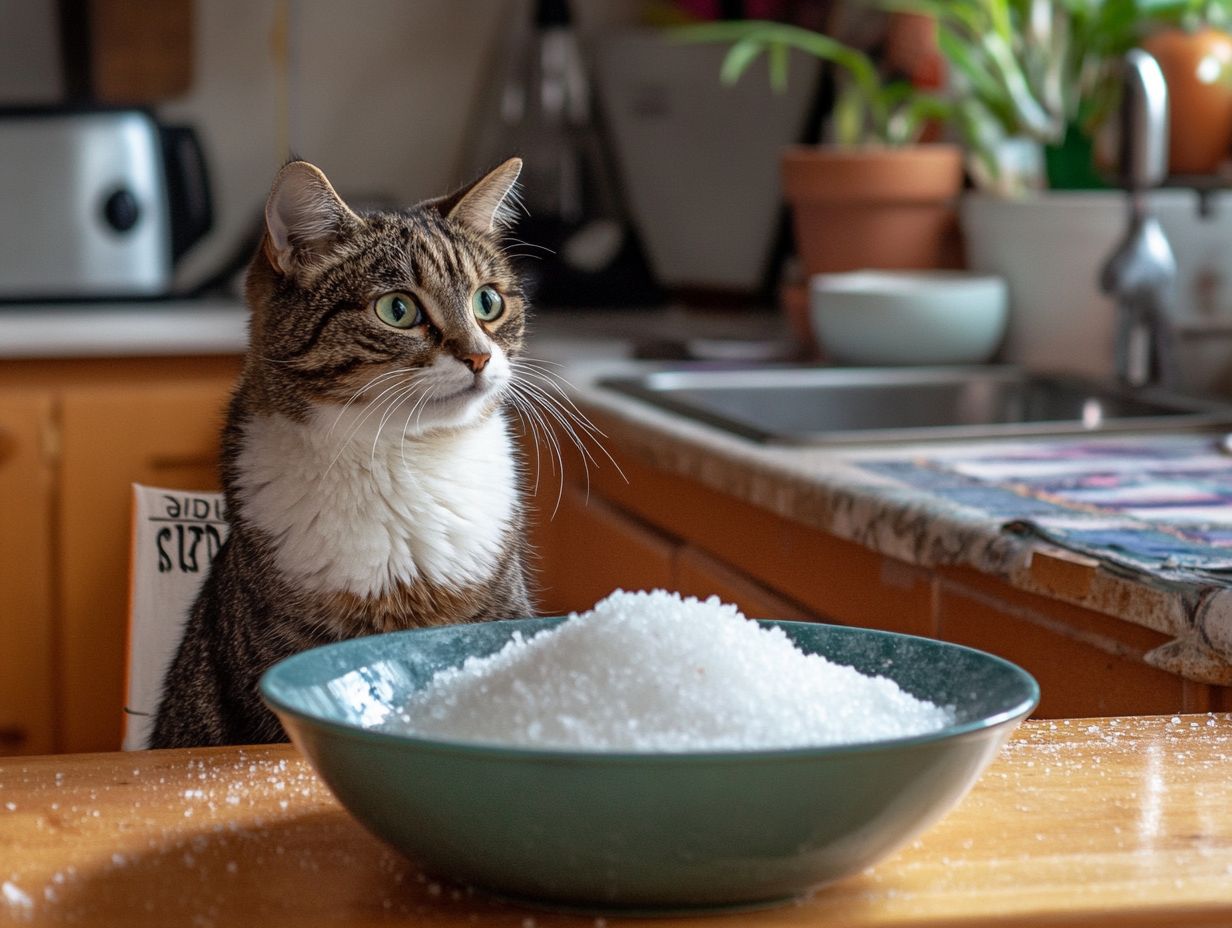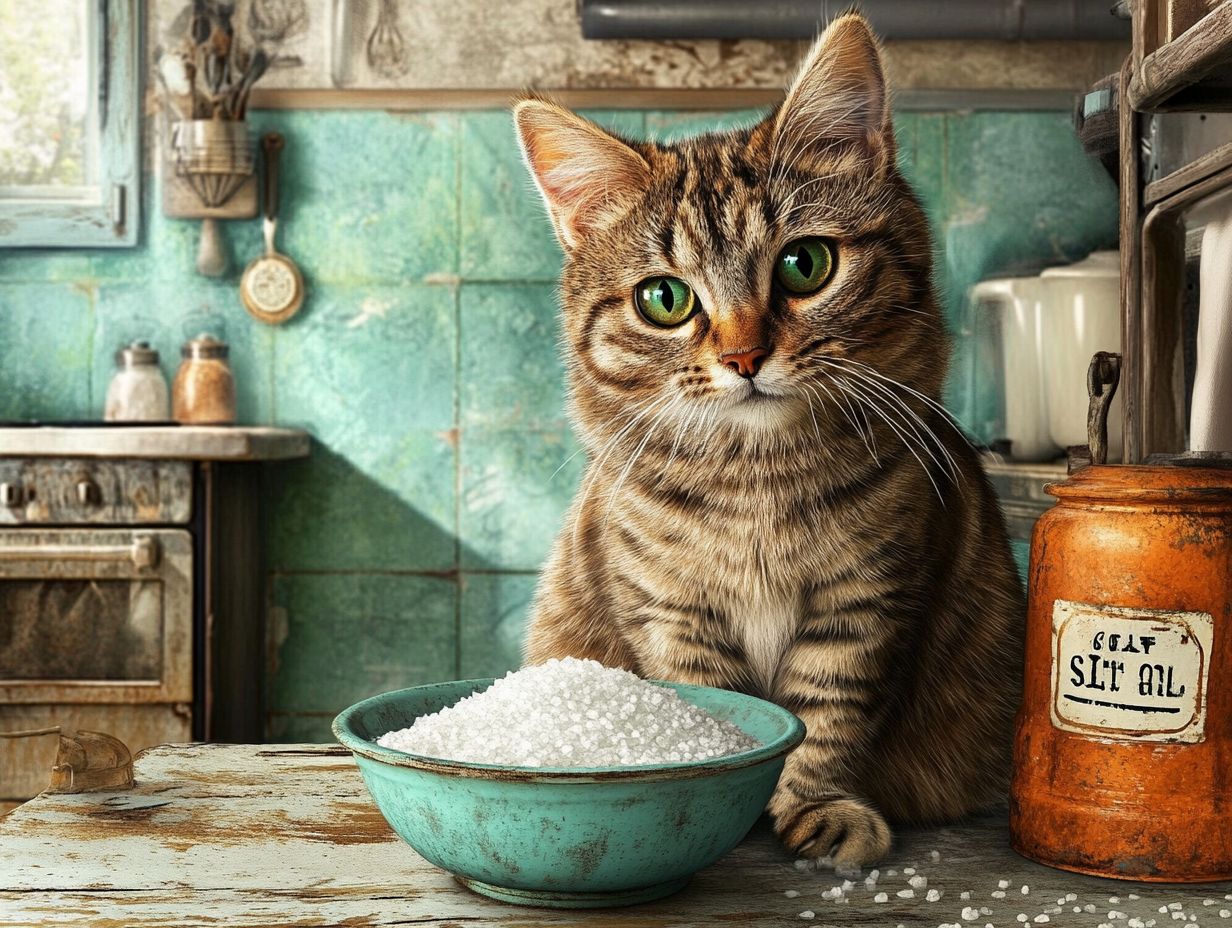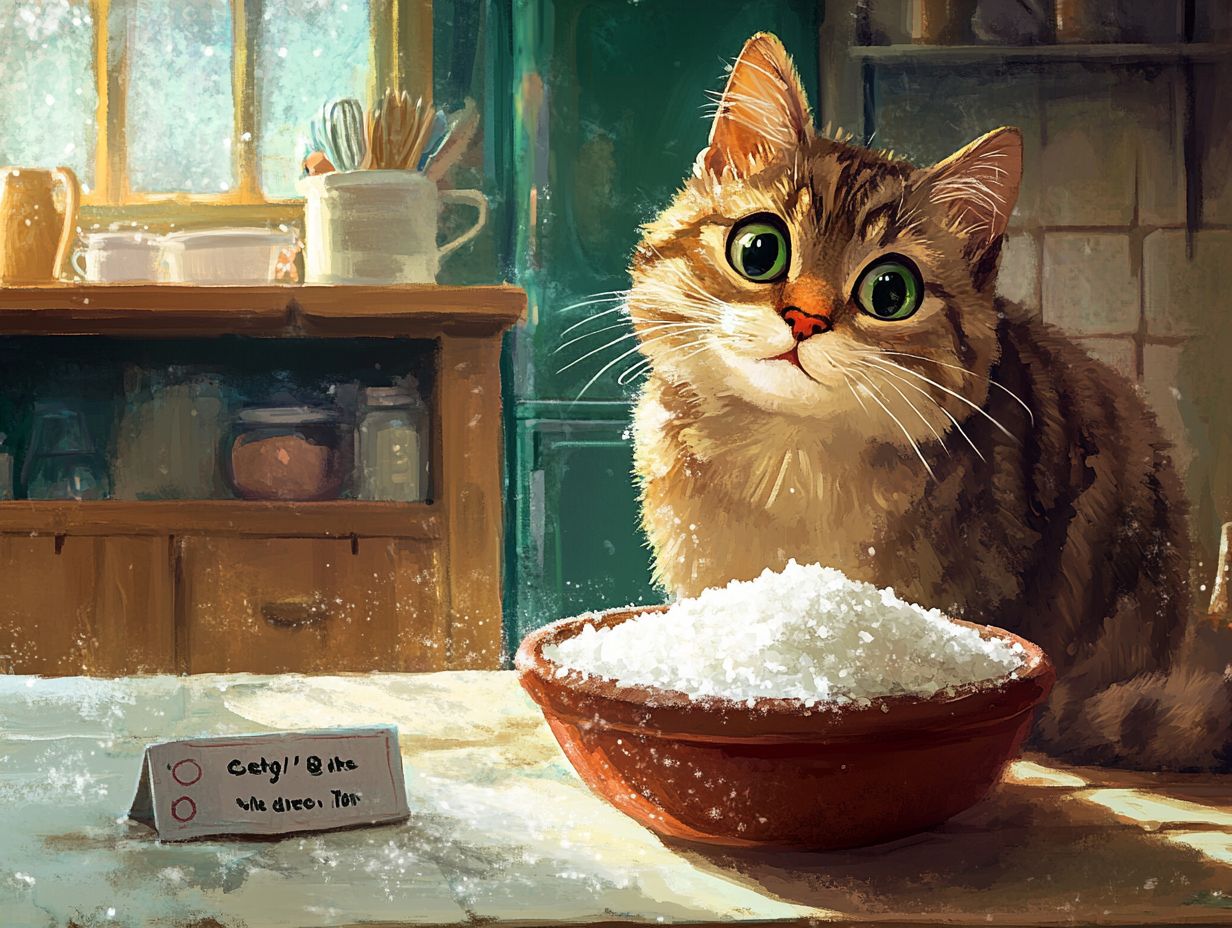Cats are fascinating creatures, and understanding the specific risks of salt in their diet is crucial for pet owners. This article explores the dietary needs of cats, the dangers of salt, symptoms of salt toxicity, and healthier alternatives to flavor their food.
While many pet owners may think a little salt can enhance their cat’s meals, excessive salt can pose serious health complications, including dehydration and kidney damage. Additionally, we share tips to ensure your cat stays safe and healthy, including consulting veterinarians for advice.
Dive in to learn how to make the best choices for your furry companion!
Key Takeaways:

- Cats need a diet primarily made up of meat to ensure good health.
- Excess salt can lead to serious health risks for cats, including dehydration and kidney damage.
- Signs of salt toxicity in cats include:
- Increased thirst
- Frequent urination
- Vomiting
- Diarrhea
- Lethargy
Seek immediate veterinary help if you notice these symptoms.
Understanding Cats’ Dietary Needs
Understanding cats’ dietary requirements is essential for maintaining their overall health. Cats need a diet primarily made up of meat, requiring animal-based protein as a crucial component.
These dietary needs are vital for growth, energy, and essential functions, including hydration and the regulation of electrolyte levels. Consulting a veterinarian ensures that your cat receives a balanced diet rich in the necessary nutrients.
What Cats Need in Their Diet
Cats need a balanced diet that includes high-quality protein sources, essential fatty acids, vitamins, and minerals to maintain their health and vitality. These nutrients support muscle development, immune system function, and overall energy levels.
Protein from meat provides the amino acids necessary for tissue repair and growth, while fats contribute to healthy skin and a lustrous coat. Although carbohydrates are not essential, they can serve as a quick energy source when included in moderation.
Poor nutrition can lead to various health issues, including obesity, dental problems, and chronic conditions like diabetes. Access to clean, fresh water is essential for preventing urinary tract diseases and aiding digestion.
The Dangers of Salt for Cats
The dangers of salt for cats are often overlooked. Excess sodium can lead to sodium toxicity and dehydration, both requiring immediate veterinary attention.
Cats are not equipped to handle excess sodium, and salty foods can disrupt their electrolyte balance, resulting in serious health issues. For more information, visit this article on salt toxicity in cats.
It is essential for cat owners to be aware of which foods contain high salt levels and to monitor their pets’ diets to prevent potential poisoning.
Potential Health Risks

The potential health risks associated with salt toxicity in cats include dehydration, kidney failure, and even seizures if left untreated. Symptoms may include:
- Increased thirst
- Frequent urination
- Lethargy
- Vomiting
- Trembling
Quick medical intervention is essential; veterinarians can provide treatments, such as fluid therapy, to help restore electrolyte balance and limit potential damage.
Signs of Salt Toxicity in Cats
Recognizing the symptoms of salt toxicity is crucial for ensuring prompt treatment. These signs include:
- Vomiting
- Diarrhea
- Lethargy
- Increased urination
- Decreased appetite
These symptoms indicate a serious condition that may require veterinary intervention.
Alternatives to Salt for Flavoring
There are numerous healthy alternatives to salt for flavoring cat food that enhance taste without the harmful effects of excess sodium. Options include:
- Chicken broth – aids in hydration and adds flavor.
- Fish oil – rich in omega-3 fatty acids, promoting skin and coat health.
- Cat-safe herbs like parsley and catnip – entice picky eaters and provide antioxidants.
For more information, check out this article on Can Cats Eat Salt? Why You Should Avoid It.
How to Keep Your Cat Safe from Salt
- Avoid giving your cat human foods that may contain hidden salt, such as processed snacks.
- Be aware of which foods contain high sodium levels.
- Regularly consult with a veterinarian for guidance on dietary practices.
- Read food labels carefully, as many processed pet foods may contain high levels of salt.
For more information, check out this article on Can Cats Eat Salt? Why You Should Avoid It.
Frequently Asked Questions
Can cats eat salt?

No, cats should not eat salt. While small amounts may not harm your cat, excessive salt intake can lead to serious health issues. Monitor your cat’s sodium intake closely.
Why should I avoid giving my cat salt?
Excess salt intake can cause dehydration, electrolyte imbalances, high blood pressure, and kidney damage in cats. Symptoms of salt poisoning include vomiting, diarrhea, tremors, and seizures, with potential long-term effects such as organ damage.
What happens if my cat eats salt?
If your cat accidentally consumes salt, they may experience vomiting, diarrhea, and excessive thirst. Large salt ingestions can be life-threatening and require immediate veterinary care.
Can my cat have any type of salt?
No, all forms of salt are harmful to cats, including table salt and sea salt. Always check labels for hidden sodium in processed foods.
Are there any alternative seasonings I can use instead of salt?
Yes, safe alternatives include herbs like parsley and catnip, which can enhance the flavor of your cat’s food. Always consult your veterinarian before adding new ingredients.
How can I ensure my cat doesn’t consume excessive salt?
Keep all salt and salty foods out of reach and read ingredient labels carefully. Monitoring your cat’s diet is crucial for their health.
Conclusion
In summary, avoiding salt in your cat’s diet is essential for their health. Instead, opt for safe seasonings to enhance their meals and always consult your veterinarian for personalized dietary advice. Regular veterinary visits can help identify dietary concerns before they become serious.